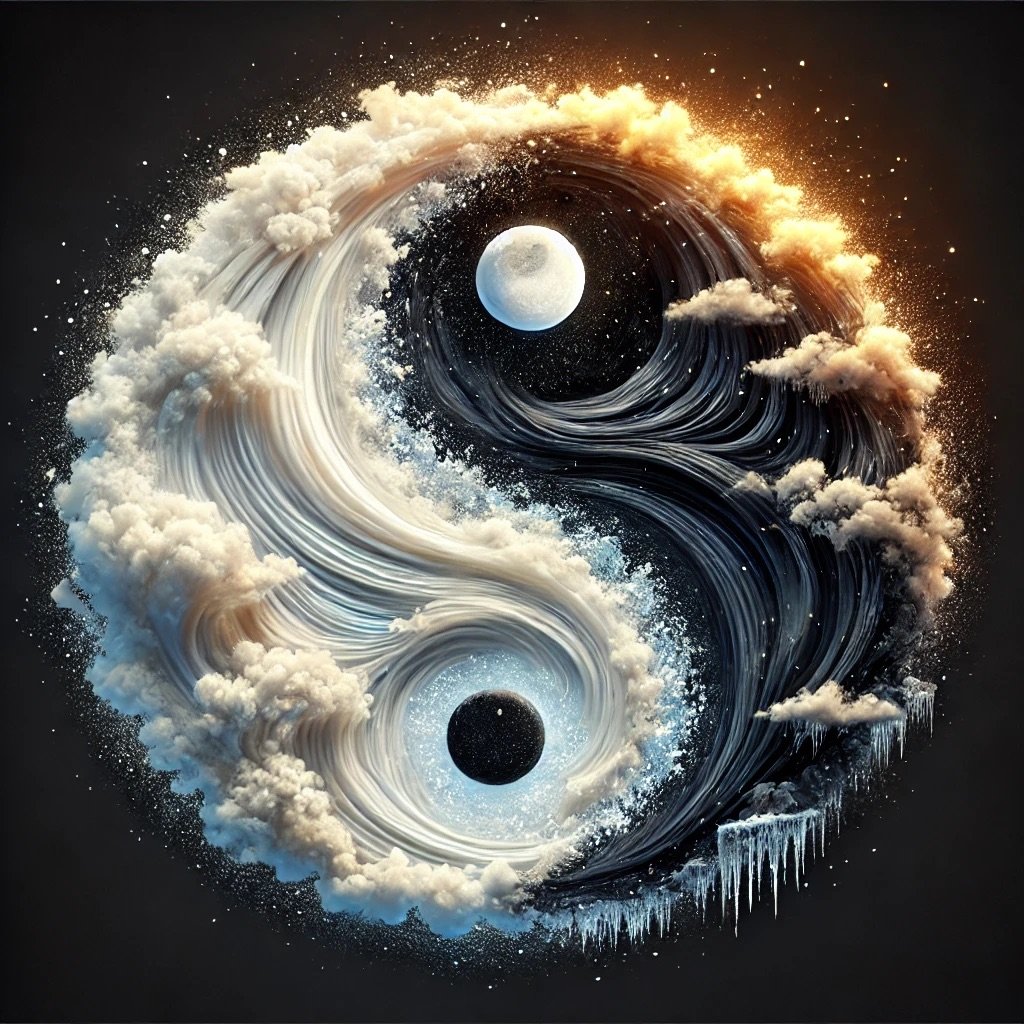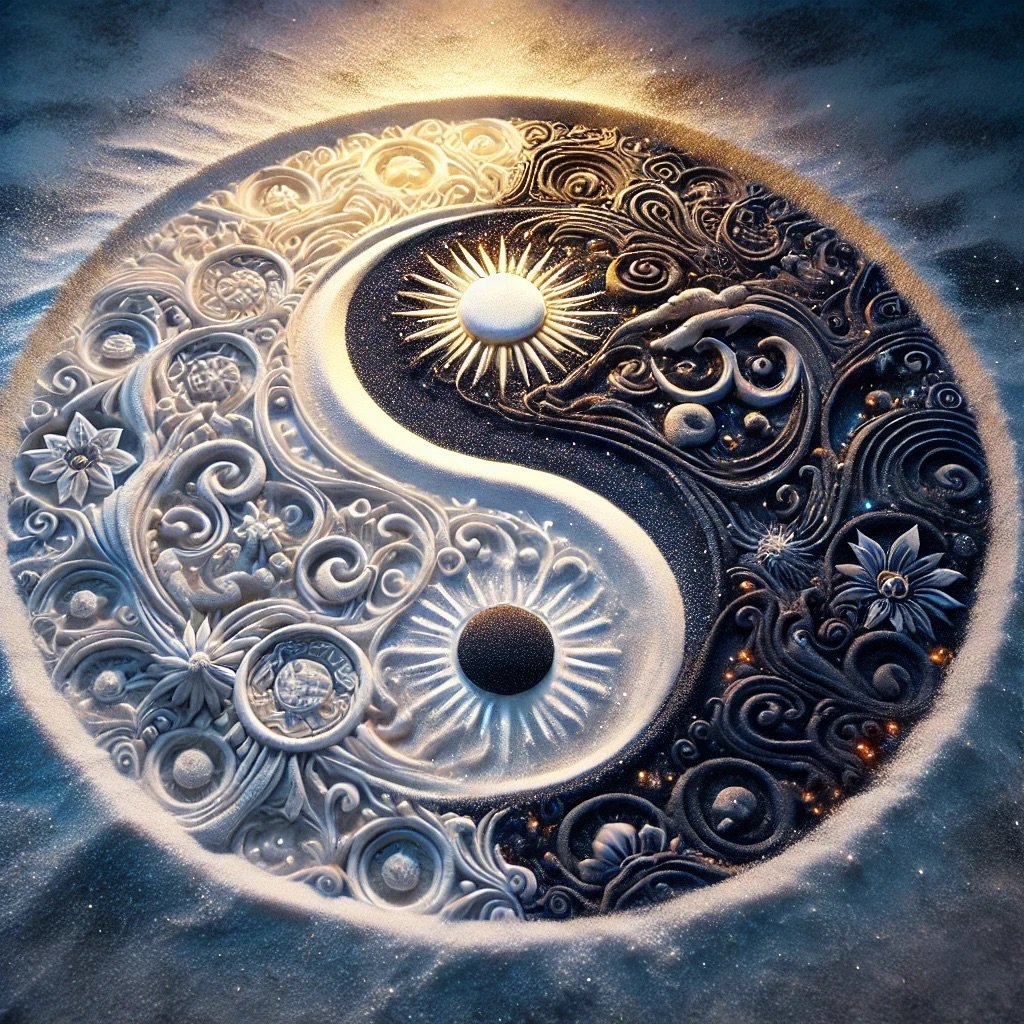Yin-Yang Theory
Today we will look at one of the central concepts in East Asian Medicine, the notion of Yin-Yang. Key to understanding this concept is an appreciation of how Yin and Yang cannot be separated from one another: wherever there is Yin, Yang is present, and vice versa. If the sunny side of a hill is ‘Yang’, the other side must be in the shade, ‘Yin’; the presence of one necessitates the presence of the other. This is why the term Yin-Yang is used here, rather than “Yin and Yang”.
Light and dark complete one another and co-exist within each other.
Yin-Yang is essentially an expression of direction along any spectrum with two poles. Take light and darkness, for example. We could say that Darkness is Yin and Light is Yang, but this is a relative, rather than absolute, statement. In comparison to the Sun’s humongous, intense light as Yang, a candle flame would be Yin, even though both are light.
This is a way to conceive of polarities not as oppositional– like light and darkness in a battle for supremacy–but rather as complementary. Light and dark complete one another and co-exist within each other. In the world at large, we see how polarity is understood to imply conflict, and differences are viewed as inherently oppositional. There are many reasons for this current worldview of polar opposites locked in conflict. Yin-Yang theory offers a different perspective: these polarized forces are not oppositional, but generate a life-sustaining tension in the universe that can be observed and respected as necessary dimensions of a whole, keeping the world in dynamic equilibrium.
How Does Yin-Yang Relate to Health?
Yin-Yang is fundamental to the way acupuncture conceives of and diagnoses illness. Illness in the modern world is often seen as “oppositional” to health. Alternatively, Yin-Yang considers simply states of activity and rest in our body. Activity is important to health, but so is rest–and since the two can’t happen simultaneously, a healthy alternation of the two is fundamental to health. When health is reframed from a Yin-Yang perspective, we can see through Pulse taking and other diagnoses how disease can sometimes be a caution and redirection in our lives — breaking us out of the fixed patterns and routines, which in turn offers a more holistic way to view and relate to illness.
As an example, when stress is high, our cortisol levels spike. Cortisol is a naturally occurring steroid hormone, and like all steroids it weakens the immune system if it is present for extended periods of time. This in turn makes us more susceptible to illness, and more likely to catch a virus like the common cold. For most individuals, a cold is not life-threatening, but forces one to slow down, rest and get into a state of recuperation that the body badly needs. Using the framing of Yin-Yang, we could say chronic stress and cortisol in the system is a Yang state in which we are constantly moving and engaged in outer experience. When this activity becomes too excessive, illness may find its way in and force us into a Yin state of rest, self-care and retreat from outer obligations. As such, illness can sometimes be a restitutive measure that is helping lead us back to a state of greater balance in our health.
There are, of course, exceptions. Illness can be life-threatening, and many people are unable to take time away from daily responsibilities to rest and recuperate when they are sick. This is why medicine–especially preventive medicine–is a necessary tool. The goal of holistic healthcare is therefore promoting balance between the alternating states of Yin-Yang in the body, rather than a static state to be achieved through eliminating all illness. When our physical body, bodily functions, mind, or emotions trend too far in one direction, this disrupts the balance of health and is likely to result in pain, illness or disease. The longer the imbalance lasts, the more chronic or deeply rooted illness becomes. The goal of our medicine is to promote this balance of Yin-Yang, guiding and maintaining the body’s processes in healthy balance between activity and rest.
How is Yin-Yang Applied Clinically?
So, if the goal of Acupuncture is to promote healthy dynamics of yin-yang, how is this achieved? Recently, we have looked at the two main tools used in acupuncture practice: Moxa and Needles.
Needles, as a solid and heavy, durable metal, are a relatively Yin modality. Yet the metal is very light, flexible and precise–used to pierce and target small points–which is a Yang application of this Yin modality. So the use of acupuncture needles is a blend of Yin-Yang itself. The effect of needles is therefore to target active functions of the body–Yang–and draw it back to a more relaxed state–Yin.
Moxa is considered a Yang modality because it uses energy—specifically, infrared radiation—to treat the body. While the heat from infrared radiation is Yang, it's at the low end of the spectrum. Picture a rainbow, starting with red and moving to violet. The colors represent increasing frequencies, eventually reaching ultraviolet and beyond. Infrared is on the opposite side, with a slow vibration, which introduces a Yin component to moxa despite its Yang nature. This balance allows moxa to engage Yin, or inactive areas of the body, and stimulate Yang activity.
These modalities are emblematic of the simplicity and elegance of acupuncture. The body is a dynamic system which offers endless complexity and possibilities to apply Yin-Yang theory. Understanding this theory not only deepens your knowledge of East Asian medicine, but also offers a new way to observe the world. Next time you’re out and about, notice how this new understanding of Yin-Yang theory might shift how you see and interact with your surroundings.


